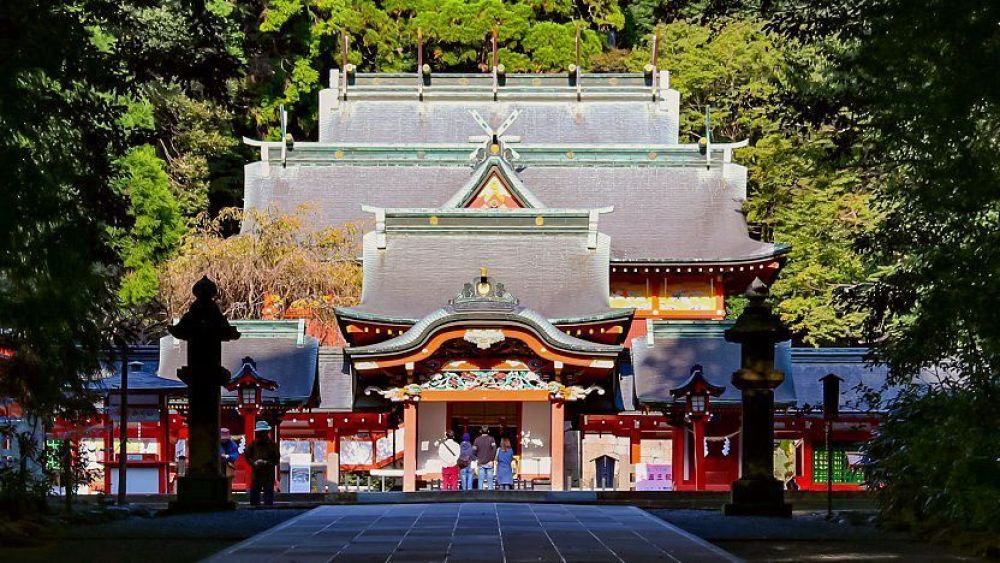

Kirishima Shrine is an iconic spiritual site nestled in the lush forests of Kagoshima Prefecture on Kyushu Island, Japan. Dedicated to the gods of Japanese mythology, it has long drawn visitors seeking divine favor, solace, and a connection with Japan's deep cultural traditions.
Rooted in antiquity, the shrine's origins trace back to the mythical age of the gods, specifically to the legend of the divine progenitors of the Japanese imperial line. It is believed that Ninigi-no-Mikoto, the grandson of the sun goddess Amaterasu, descended from the heavens to the peak of Mount Takachiho, a part of the Kirishima mountain range, establishing the sanctity of the area. Over the centuries, the shrine became a site of pilgrimage for those honoring the gods and the imperial lineage.
The modern history of tourism at Kirishima Shrine began with the Meiji Restoration in the late 19th century, which reinvigorated national interest in Japan's ancient sites and spiritual heritage. With improvements in transportation and the government’s promotion of domestic travel, Kirishima Shrine became more accessible to visitors.
After World War II, Japan saw a significant upsurge in domestic tourism. Kirishima Shrine leverages its historical and mythological significance, natural beauty, and therapeutic hot springs nearby to attract a wider audience. The 1950s and 1960s marked significant strides in infrastructure development, further bolstering the shrine's accessibility.
Today, Kirishima Shrine is a well-known destination in Kagoshima, favored not just by the spiritually inclined but also by hikers, history buffs, and cultural enthusiasts. The shrine enjoys the patronage of a diverse crowd, ranging from locals to international tourists. Ecotourism is one of the latest trends, where visitors take interest in the surrounding Kirishima-Kinkowan National Park and the rich volcanic landscape.
Another contemporary trend is wellness tourism, with travelers visiting Kirishima for its reputed spiritual energy and the health benefits of the nearby hot springs. In addition to this, cultural events and festivals, such as the annual Rei-taisai (grand festival), draw thousands of visitors, eager to experience traditional Japanese celebrations firsthand.
Advancements in digital marketing and social media have played pivotal roles in recent years, as picturesque shots of the shrine and its vibrant festivals circulate online, enticing a new generation of globe-trotters. The local government and tourism organizations continually work on improving visitor facilities and creating new experiences to cater to the evolving interests of tourists.
Indeed, the historical layers and enduring appeal of Kirishima Shrine make it a jewel in the crown of Kagoshima's tourism, offering a unique glimpse into Japan's rich tapestry of spiritual traditions, natural wonders, and cultural festivities.